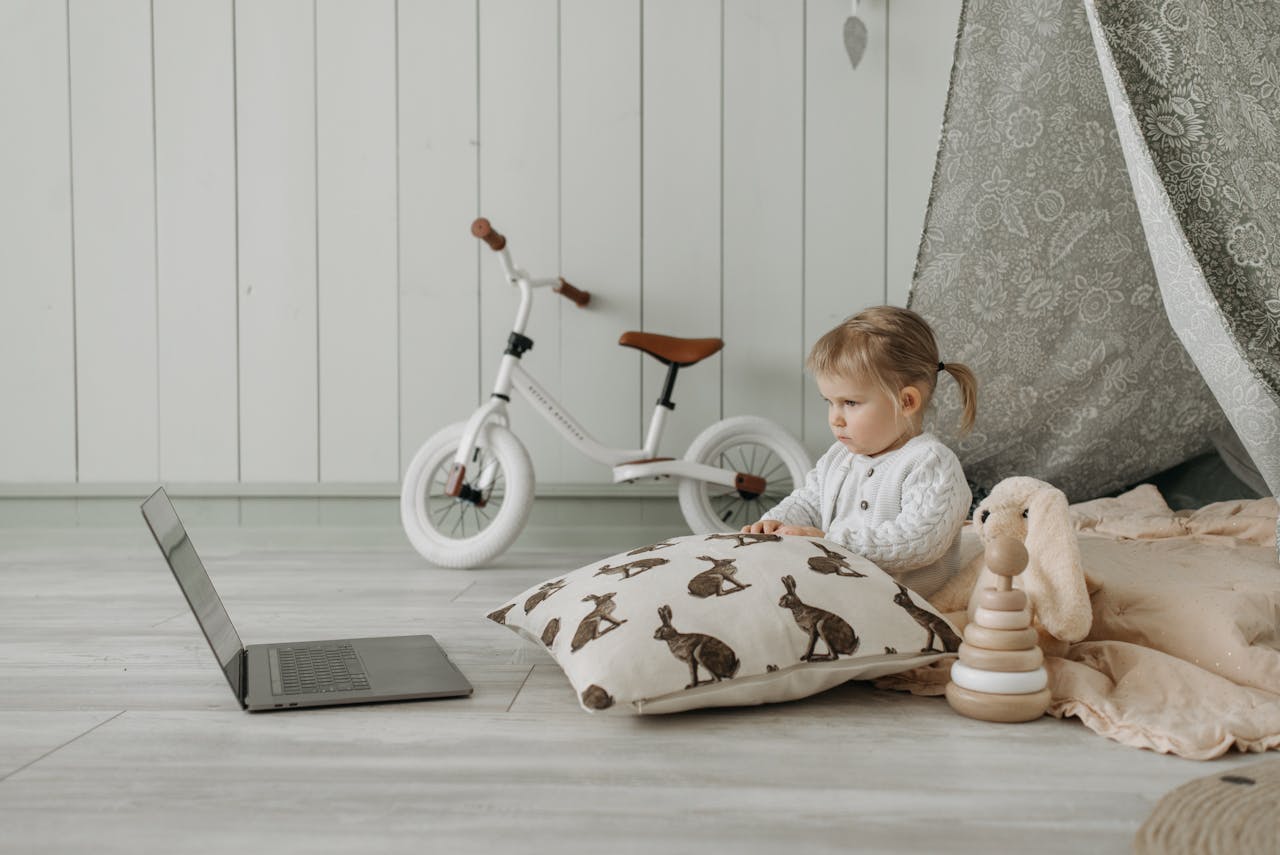Working hours
Mon - Fri: 8am to 5pm
Mon - Fri: 8am to 5pm
Share

These days, children are becoming familiar with and have access to the online world from a very early age.
A recent study by Ofcom, the communications regulator in the UK, tells us that 97% of children aged between 3-17 went online in 2022. What’s more, is that the figure is only slightly lower for 3-4-year-olds at 87%.
It’s not difficult to see from these statistics that online safety matters in nurseries and Early years settings.
The role of a nursery practitioner is to nurture and support the children in their care to develop and grow, driven by the guidance and stipulations of the EYFS. To keep children safe online, practitioners must instil a solid sense of E-safety in the setting itself as well as provide the necessary guidance for families at home.
By educating young children about online safety early on, we not only look after their well-being whilst they’re still growing and developing, but we also help them to begin developing healthy and respectful attitudes towards technology and the internet. It’s not going anywhere, let’s be honest! Introducing children to the wonders of technology in a smart and controlled way means they can embed digital literacy skills, which will see them well as they start to mature.
Modelling and promoting responsible technology and internet use in the early years equips children with the tools they need to make informed choices.
The critical skills children will need as they mature include:
But how can an Early years setting help to prepare the ground for the development of these skills?
There are many ways in which nursery managers and practitioners can help to spread the word and keep children safe in the nursery, at home and outside of it.
Handing out leaflets to parents, hosting or organising E-safety workshops and writing newsletters to detail the risks of going online at home are all great ways of highlighting the threat of the internet for young people.
With so many ways to access the internet and so many new platforms, websites, and apps materialising every week, acknowledging the risks of internet-based screen time is very important. Modeling responsible behaviour with devices can work wonders in supporting children to develop healthy and safe attitudes towards technology.
And remember, the focus is not on demonising it. Technology is a wonderful thing when used wisely.
Nursery managers and their teams can really help families implement safe online practices themselves, too.
Here are some ways that you can support families to keep the e-safety conversation going at home:
Overarchingly, the way we as adults model and talk to children about the use of devices and the internet plays a pivotal role in their awareness of and respect towards it. Staff, parents and carers alike should be encouraged to talk to the children whilst they are using electronic devices to teach in the moment about how we stay safe.

E-safety is everyone’s responsibility, and every individual who is involved in a child’s care has a role to play. To ensure your nursery is promoting the welfare of the children it supports, it is important that policies and procedures are diligently assessed in response to guidance updates.
Regular Policy Review And Team Updates
By having a strategic plan in place, you, as the nursery manager, can update your practitioners on any changes that might influence their role in safeguarding the children in the setting.
Scheduled Training Sessions
Implementing a structured approach to both policy review AND staff training ensures employees are both well-equipped and able to seek clarification or ask questions in response to any new policy changes or changes to guidance.
And when it comes to crossing the t’s and dotting the i’s, there are a few documents and protocols you need to have in place, too:
Safeguarding Policy
Your safeguarding policy is in place to ensure that all children are safe and secure in your setting and involves factors such as protecting them from abuse and maltreatment, recruiting suitable employees, accidents, illnesses and emergencies and health and safety.
Use Of Mobile Phones And Cameras Policy
Your nursery likely has a dedicated camera and/or iPad that is used to take photos within the setting or on outings because photos provide an important source of evidence when documenting children’s development.
However, the internet is not used by everyone in a safe way. It has become a significant tool used by some to distribute indecent photographs, made worse by the significant increase in the number of mobile devices that can be used to actually take photographs these days.
Putting a policy in place to protect the photos taken is critical, and involves elements such as:
Giving time and attention to these considerations will keep children safe within your early years setting.
Do you manage or work in an Early years setting? Wondering if your E-safety protocols are sufficient or up to date?
Subscribe to our newsletter for updates and changes in legislation to ensure you remain compliant and your children stay safe online.
With the ever-changing regulations and guidance, sign up to our monthly newsletter and mailings to stay current and keep up to date with running your childcare setting.
Simply enter your details below to join our mailing list.
By completing this form you are agreeing to our privacy policy You can unsubscribe at any time

Millennium House, High Street,
Studley, Warwickshire, B80 7HJ.